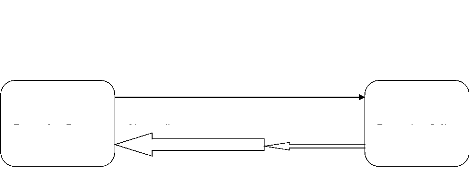2.12.2 Credit Default Swaps (CDSs)
CDS is one of the most common credit derivatives and these
credit derivatives are considered as instruments used in moving risk over from
one party to another. This is because they are simple in structure and have
very flexible conditions whereby banks as well as investors can easily use in
hedging their exposure to credit risk. CDS exchanges streams of payments for
agreement in repaying the specified notional amount (face value of an
asset/instrument used in calculating payments made) if there is a default
payment on the loan caused by a `supposed' third party. Bear in mind that, the
protection buying price with a CDS is strictly based on basis point spreads
(the annual amount the protection buyer must pay the protection seller over the
length of the contract expressed as a percentage of the notional amount) with
the basis point being just 0.01% of the contract's notional value of the
supposed deal because 1 basis point=0.01%. Note that the premium is usually
quoted in basis points per year of the contract's notional amount whose payment
is made quarterly. For instance, consider the CDS spreads of the risky
corporation to be 25 basis points, that is, 0.25% remembering that 1 basis
point=0.01%, then an investor wanting to buy a $10million
worth of protection from a triple `A' bank, must be ready to pay the bank
$25,000 per year and these payments continue until the CDS contract expires or
a default occurs.
2.12.2.1 How CDSs Work
CDSs allow the contracting partners to trade or hedge the risk
that an underlying entity defaults. Here, the protection buyer pays a yearly
premium until the contract matures. In return, the protection seller assumes
the financial loss in case the underlying security becomes insolvent. As a
result of this, a CDS contract resembles an insurance policy whereby one side
assumes the risk and the other pays an insurance premium. When signing the
contract, the protection buyer and seller agree upon a premium which will
remain constant until the contract matures and which compensates the protection
seller for bearing the risk.
A typical CDS contract, is bounded with some terms and
conditions usually documented under a confirmation referencing the credit
derivatives definitions as published by the International Swaps and Derivatives
Association (ISDA). In the confirmation, we will have the reference entity
specified, be it a corporation or sovereign body generally being identified
with outstanding debts plus a reference obligation, usually unsubordinated
government bond. Within the confirmation there is a specification of the
calculation agent responsible for making the determinations as to successors
and substitute reference obligations as well as performing the various
calculations and the administrative functions regarding any transaction.
As if that is not enough, in the CDS confirmations, all credit
events giving rise to payment obligations by the protection seller and delivery
obligations by the protection buyer are being specified. Some of these credit
events include bankruptcy with reference to the supposed reference entity and
its failure to pay with respect to its direct loan debt. The contract's
effective date and scheduled termination date is always referred
to the period over which the

default protection extends. The following diagram illustrates a
summary on how CDS works.
Figure 7: A Summary on How CDS Works
Premium
Protection Buyer No credit event: no payment
Credit event: payment Protection
Protection Seller

Reference entity
From the diagram above, it is clear that there is a
relationship between the protection buyer and seller whereby a premium is paid
to the seller. The seller in return is protected because he has an option of
repaying or not depending on the state of the financial market. All of these
are sealed in the presence of a reference entity which is usually a corporation
or a government. CDS simply put, is a contract of protection between two
counterparties-the protection buyer and the protection seller. Note that the
protection buyer is the one responsible for making the payments to the
protection seller but in case of a default, the seller pays the par value of
the bond in exchange for any physical delivery of the bond.
| 


